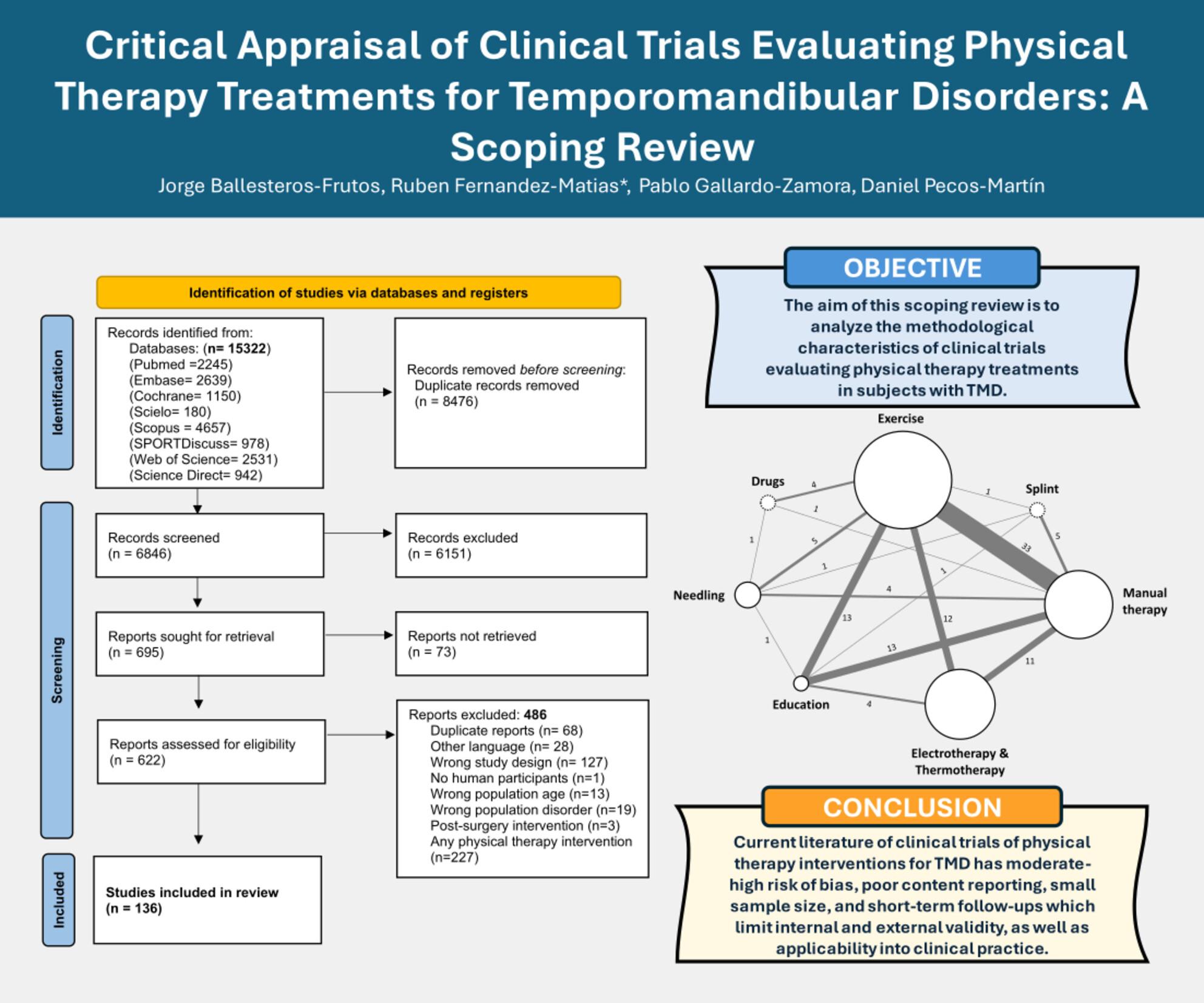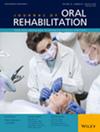Critical Appraisal of Clinical Trials Evaluating Physical Therapy Treatments for Temporomandibular Disorders: A Scoping Review
Abstract
Background
Physical therapy seems the most promising treatment for temporomandibular disorders (TMD), although their effectiveness is controversial in general, due to high heterogeneity regarding study designs, applied treatments and outcomes measures.
Objectives
The aim of this scoping review is to analyse the methodological characteristics of clinical trials evaluating physical therapy treatments in subjects with TMD.
Methods
A systematic search was conducted in Medline/PubMed, SPORTDiscus, Scopus, Web of Science, SciELO, Cochrane, ScienceDirect and EMBASE databases on 31 October 2023. Clinical trials evaluating physical therapy interventions in patients older than 18 years with TMD, published in English or Spanish languages. Data regarding content reporting of study designs, sample characteristics, interventions and outcome measures was extracted. Descriptive summary statistics were reported.
Results
The search retrieved 15 322 records, and 136 were included. There were 107 randomised clinical trials, 5 non-randomised controlled trials and 24 non-controlled trials. Most studies had moderate to high risk of bias, small sample sizes (median, 44 subjects) and short follow-up periods (1–3 months). The most common diagnostic criteria used was the Research Diagnostic Criteria for Temporomandibular Disorders (RDC/TMD) (48.9%). The most reported experimental interventions were manual therapy (40.4%), exercise (30.2%) and electrotherapy modalities (27.2%), and the most common outcome measure domains were pain (83.8%), range of movement (61.8%), disability (45.6%) and mechanosensitivity (29.4%). There was poor content reporting of experimental interventions.
Conclusions
Current literature of clinical trials of physical therapy interventions for TMD has moderate to high risk of bias, poor content reporting, small sample size and short-term follow-ups which limit internal and external validity, as well as applicability into clinical practice.


 求助内容:
求助内容: 应助结果提醒方式:
应助结果提醒方式:


